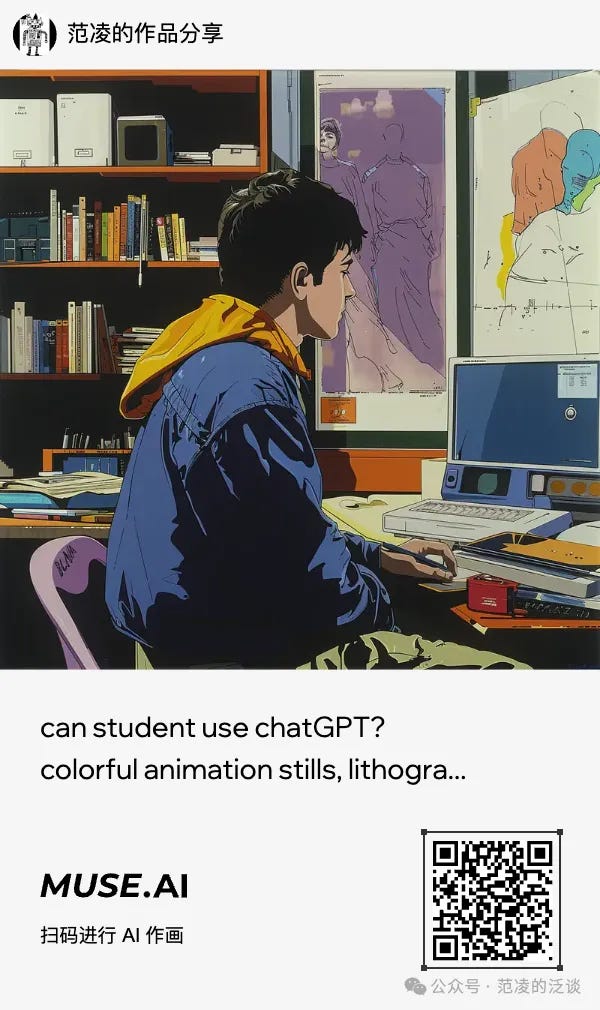This blog was originally written in Chinese. It was translated using ChatGPT.
If you were a teacher, would you use ChatGPT yourself? If you were a teacher, would you allow your students to use ChatGPT? If you were a student, would you use ChatGPT to learn? If you were a student, would you accept your teacher using ChatGPT?
I conducted a small survey, and here are the results I received. Many teachers have already started using GPT, but they don't allow their students to use it. This seems a bit unfair to me 😄 Feel free to vote at the end of this post.
When I read student papers, there’s a strong sense of formula—wording, format, viewpoints, examples. Teacher comments on these papers often focus on format errors and incomplete content. From my daily interactions with students, I feel their depth of thought and creativity are being neutralized by this formulaic approach. A Harvard student conducted an experiment where papers written by ChatGPT received high grades, A’s and B’s, from Harvard professors. This formulaic approach is indeed a widespread issue in education, and ChatGPT is the perfect tool to help us easily complete assignments. But this is not why I am discussing whether students should use ChatGPT. The goal of education is to enable students to learn, and any teaching tool should be evaluated based on whether it helps students learn.
Let's compare two learning methods: one is called passive learning, and the other is active learning. Passive learning is when we sit in a classroom, listening to the teacher’s lectures (much like attending annual grand lectures ☺️). Active learning is interactive, with frequent interruptions and digressions. According to student feedback, passive learning makes students feel they are gaining more and achieving better results, as the knowledge is being fed to them, making it easier to digest. However, in terms of exam results, active learning yields better outcomes. This paradox is fascinating because students judge their learning based on the “smoothness” of the process. But smoothness might not be beneficial for learning. Quality learning requires "desirable difficulties." This concept, proposed by educational psychologists Bjork and Bjork, suggests that challenges during the learning process can enhance focus, memory, and long-term outcomes.
Students use GPT for two reasons: one is to slack off—to complete assignments more smoothly; the other is to better overcome challenges in learning difficult subjects. Therefore, before deciding whether students should use ChatGPT, we should ask: is it to slack off, or to tackle more challenging problems?
Guess what I’ve been using ChatGPT to learn recently?
The following are the original Chinese text.
该不该让学生用ChatGPT?
如果你是老师,会自己用ChatGPT吗?
如果你是老师,会让学生用ChatGPT吗?
如果你是学生,会用ChatGPT来学习吗?
如果你是学生,会接受老师用ChatGPT吗?
我做了一个小规模的调研,以下是我收到的数据。可见很多老师都已经开始用GPT了,但却不让学生使用。我窃以为不太公平😄也欢迎大家在文末继续投票。
我读学生写的论文,会有一种很强的套路感,包括措辞、格式、观点、案例。老师给论文的评语也常常是针对格式错误和内容不完善的。因为和学生有很多日常交流,我觉得他们的思考深度和创新事实上被这种套路感中和了。有一个哈佛学生做的实验,用ChatGPT写的论文,哈佛教授都打了A和B的高分。套路感确实是教育的普遍问题,ChatGPT是一个最善于在套路面前让我们轻松完成作业的工具。但这显然不是我讨论该不该让学生用ChatGPT的原因。教育的目的是让学生可以学习到知识,任何教学工具都可以从是否有利于学生学到知识作为衡量标准。
如果我们比较两种学习方式:一种叫主动学习,另一种叫被动学习。被动学习就是我们坐在教室里,听老师洋洋洒洒的讲课(就像听一些年度大课一样☺️)。主动学习是指问答式的,没有那么连贯的知识体系传授,而是常常会被问题打断和分叉。如果从学生的反馈来说,被动学习让学生觉得收获更多、效果更好。因为知识是被喂到自己嘴里的,咀嚼起来会更轻松。但从考试成绩来说,主动学习却取得更好的成绩。从而证明从结果来说,主动学习成果比被动学习更好。这是一个很有趣的矛盾现象,因为学生对于是否学到知识的评价是来自于学习过程中感受上的“流畅度”。但是流畅度对学习也许并不是一件好事,有质量的学习需要“有益的困难(desirable difficulties)”。这个观点是教育家Bjork夫妇提出来的,他们发现在学习过程中,遇到困难和挑战对学习有益,可以提高学习的专注度、记忆力和长期成果。
学生使用GPT有两个目的,一个目的是偷懒——更流畅的完成作业;而另一个目的是在学习有挑战的问题中更好的克服“困难”。因此,该不该让学生使用ChatGPT,要先问问:这是为了偷懒,还是为了去学习更有难度的问题?
猜猜我最近在用ChatGPT学习什么?





我反而覺得如果在大學時期可以掌握LLM的科技,可以加速我解鎖更多的知識!